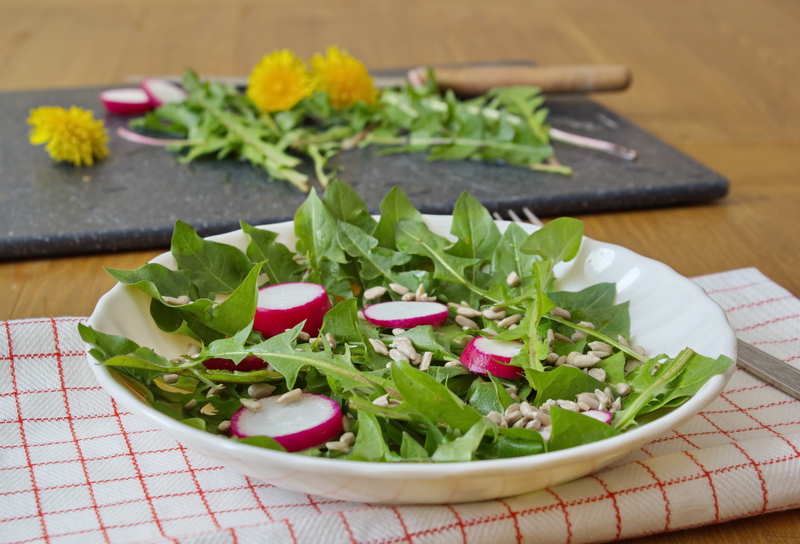The Alchemy of Waste to Soil Conversion
Posted on 03/09/2025
The Alchemy of Waste to Soil Conversion: Transforming Trash into Treasure
In the world of sustainable living and regenerative agriculture, the concept of turning waste into soil has captured the imagination of innovators, gardeners, and eco-enthusiasts alike. The alchemy of waste to soil conversion is not only a testament to nature's remarkable ability to recycle and renew, but also a powerful tool for combating pollution, enriching our food systems, and fostering a healthier planet for future generations. In this comprehensive article, we delve deeply into the fascinating world of waste-to-soil processes, examining their scientific foundations, practical applications, and transformative potential for individuals and communities worldwide.

Understanding Waste to Soil Conversion
What Is Waste to Soil Alchemy?
Waste to soil conversion is the process by which organic waste--such as food scraps, yard clippings, agricultural residues, and even certain types of biodegradable industrial waste--is broken down biologically, chemically, and physically to form rich, fertile soil known as compost or humus. The term 'alchemy' evokes the magical transformation and value creation that happens when something deemed useless or even problematic is turned into a life-giving resource.
- Organic waste becomes valuable soil amendment
- Reduces landfill burden and greenhouse gas emissions
- Enhances soil health, plant growth, and ecosystem resilience
This process mirrors natural cycles where dead plant and animal material is decomposed by microbes, earthworms, and fungi, returning vital nutrients to the earth in a perpetual cycle of renewal. In the context of modern society, learning the alchemy of converting waste to soil is crucial for creating closed-loop systems that reduce waste and regenerate land.
The Science Behind Turning Waste Into Soil
The Role of Microorganisms in Waste to Soil Transformation
The secret agents of soil alchemy are a diverse army of microorganisms: bacteria, fungi, actinomycetes, and protozoa. These microscopic champions break down complex organic molecules into simpler forms, ultimately producing stable humus.
- Bacteria: Primary decomposers of sugars, proteins, and fats in organic matter.
- Fungi: Break down tough plant fibers like cellulose and lignin, aiding in structure formation.
- Earthworms and other macrofauna: Process decomposed material, create tunnels, and enhance aeration.
The process begins with the mesophilic stage, where moderate temperatures support the rapid breakdown of easily decomposable compounds. As the pile heats up, thermophilic bacteria take over, digesting more resistant matter and raising temperatures high enough to kill many pathogens and seeds. When the compost cools, a wider community of microorganisms and macrofauna finish the transformation into mature, nutrient-rich compost.
Essential Conditions for Efficient Organic Waste Conversion
- Carbon-to-Nitrogen (C:N) Ratio: Ideally, compost piles should have a C:N ratio between 25:1 and 30:1 for balanced decomposition.
- Moisture: Microbes thrive when compost is about as damp as a wrung-out sponge.
- Aeration: Regular turning introduces oxygen, preventing foul odors and supporting aerobic microbes.
- Particle Size: Smaller pieces expose more surface area, speeding up microbial action.
Under these conditions, the alchemy of turning waste to soil can complete in a matter of weeks or months, producing a crumbly, earthy-smelling soil amendment ready to nourish plants and ecosystems.
Methods and Approaches for Waste to Soil Conversion
Composting: The Classic Alchemical Process
Composting is the most widely practiced and accessible method of transforming waste into soil. The process involves collecting organic waste, managing it in either a pile, bin, or windrow system, and encouraging decomposition through monitoring and regular turning.
- Backyard Composting: Ideal for households, schools, or community gardens. Involves mixing kitchen scraps ("greens") with dry leaves, twigs, or cardboard ("browns").
- Vermicomposting: Utilizes specific species of earthworms, such as Eisenia fetida, to break down organic matter rapidly and yield high-quality "worm castings."
- Community and Municipal Composting: Large-scale systems process tons of organic waste, often adding yard trimmings and food waste from restaurants or markets.
- Industrial Composting: Uses controlled environments and often incorporates heat, mechanical turning, and carefully monitored inputs to ensure rapid and safe conversion.
Bokashi: A Fermentation Approach
- Creates acidic environment that suppresses pathogens and odors
- Fermented waste is then buried or added to soil, where it rapidly decomposes
- Accelerates the overall process of soil regeneration
Black Soldier Fly Larvae Composting
An emerging technology in the waste to soil arena uses black soldier fly (BSF) larvae to consume food waste rapidly. The larvae can convert large quantities of organic waste into frass--a nutrient-dense residue--while their own bodies become protein-rich animal feed.
- Significantly reduces organic waste volume
- Produces dual products: soil amendment and animal protein
- Efficient in both small-scale and industrial operations
Benefits of Turning Waste Into Soil
- Reduces Landfill Waste: Organic matter in landfills generates methane, a potent greenhouse gas. Composting diverts this waste stream, lowering emissions.
- Improves Soil Fertility and Structure: Compost increases organic matter, enhances water retention, improves porosity, and supplies slow-release nutrients.
- Cuts Down on Chemical Fertilizer Use: Healthy, compost-enriched soils require fewer synthetic inputs, thus preventing chemical runoff and pollution.
- Promotes Biodiversity: Compost supports beneficial soil life, from bacteria and mycorrhizae to insects and earthworms.
- Supports Food Security and Local Food Systems: Fertile soil boosts crop yields and resilience--key pillars in sustainable agriculture.
Innovations in Soil Creation from Waste
As the need for sustainable waste management increases, researchers and practitioners are exploring novel ways to create healthy soil from waste products:
- Biochar: Created by pyrolyzing biomass, biochar is added to compost or soil to sequester carbon, improve soil fertility, and reduce leaching.
- Mycoremediation: Certain fungi are introduced to compost or contaminated waste, breaking down toxins and synthesizing nutritious humus.
- Integrated Farming Systems: Circular models link animal bedding, crop residues, and food waste into composting or vermiculture, closing resource loops on farms.
- Urban Waste-to-Soil Initiatives: Cities are capturing food waste for soil production in urban farms, gardens, and green infrastructure projects.
Challenges and Solutions in Waste to Soil Conversion
Contamination Risks
One of the biggest challenges in the alchemy of waste-to-soil conversion is contamination by plastics, heavy metals, or persistent organic pollutants. If not properly separated, these contaminants can compromise compost quality and pose environmental risks.
- Solution: Effective waste segregation at the source, public education, and periodic testing of finished compost are critical steps.
Scaling Up Waste-to-Soil Alchemy
While backyard and small-scale composting are highly effective, scaling up to serve cities and agricultural regions requires infrastructure investment, education, and policy support.
- Solution: Municipal composting programs, public-private partnerships, and incentive-based systems can encourage broader participation.
Ensuring Consistency and Quality
Soil made from waste must meet safety and nutrient standards to be used in food production.
- Solution: Adopting composting protocols, certification programs, and quality assurance testing ensures that finished compost is safe, mature, and effective.
How to Start Your Own Waste to Soil Transformation
Simple Steps for Home Composting
- Choose a compost bin or pile in a well-drained, accessible location.
- Add a mix of green materials (fruit/vegetable peels, coffee grounds) and brown materials (leaves, cardboard, straw).
- Turn your pile weekly or biweekly to aerate and speed up decomposition.
- Maintain moisture--sprinkle with water during dry spells.
- After 2-6 months, harvest black gold for your garden beds.
Tip: Never add meat, dairy, oils, or pet waste to standard compost piles.
Community Composting and Soil Initiative Ideas
- Organize a local collection drop-off for neighborly exchange of compostable materials.
- Partner with schools or restaurants to gather food scraps for a community compost site.
- Start a vermicomposting collective to generate worm castings for urban farms.
- Join municipal composting programs or advocate for new policies supporting organic waste diversion.

The Future of Waste to Soil Alchemy
As populations grow and resource demands intensify, converting waste into healthy soil will become ever more essential. New research is enabling faster composting times, broader waste acceptance, and the integration of digital tools for monitoring and managing the process.
- Smart compost bins with moisture and temperature sensors are now available for households and farms.
- Apps and online communities help track progress, troubleshoot problems, and share resources.
- Emerging policy frameworks are setting the stage for more widespread organic waste recycling and soil building at regional and national scales.
Conclusion: Reviving the Ancient Alchemy of Waste to Soil
The journey from waste to soil is truly an alchemical process--a transformation that breathes life into what would otherwise be discarded, nourishing our land and closing ecological loops. With a blend of ancient wisdom and modern science, every individual, business, and community can participate in the alchemy of waste to soil conversion. By embracing these principles, we not only reduce the burden on our planet but also unlock a future of healthy soils, sustainable food systems, and resilient communities.
Whether you are new to composting or part of a citywide soil-building initiative, your participation in the remarkable transformation of waste to fertile soil is both a personal journey and a collective mission. Join the movement, and witness the magic as you convert your waste into the most valuable resource on earth: living, thriving soil.
Frequently Asked Questions: The Alchemy of Waste to Soil Conversion
-
What kinds of waste can I use to make soil?
- Fruit and vegetable scraps, coffee grounds, tea bags (without plastic), eggshells, yard clippings, dry leaves, and cardboard are all excellent inputs.
-
How long does it take to convert waste into soil?
- Depending on method and conditions, anywhere from 2 months to a year. High-temperature (hot) composting can be very fast; cooler, passive methods take longer.
-
Is home composting safe?
- Yes--if you avoid meats, dairy, and pet waste, maintain aeration, and manage moisture, your compost will be safe for garden use.
Embrace the alchemy of converting waste to soil and help restore balance between humans and nature, one handful of compost at a time.

